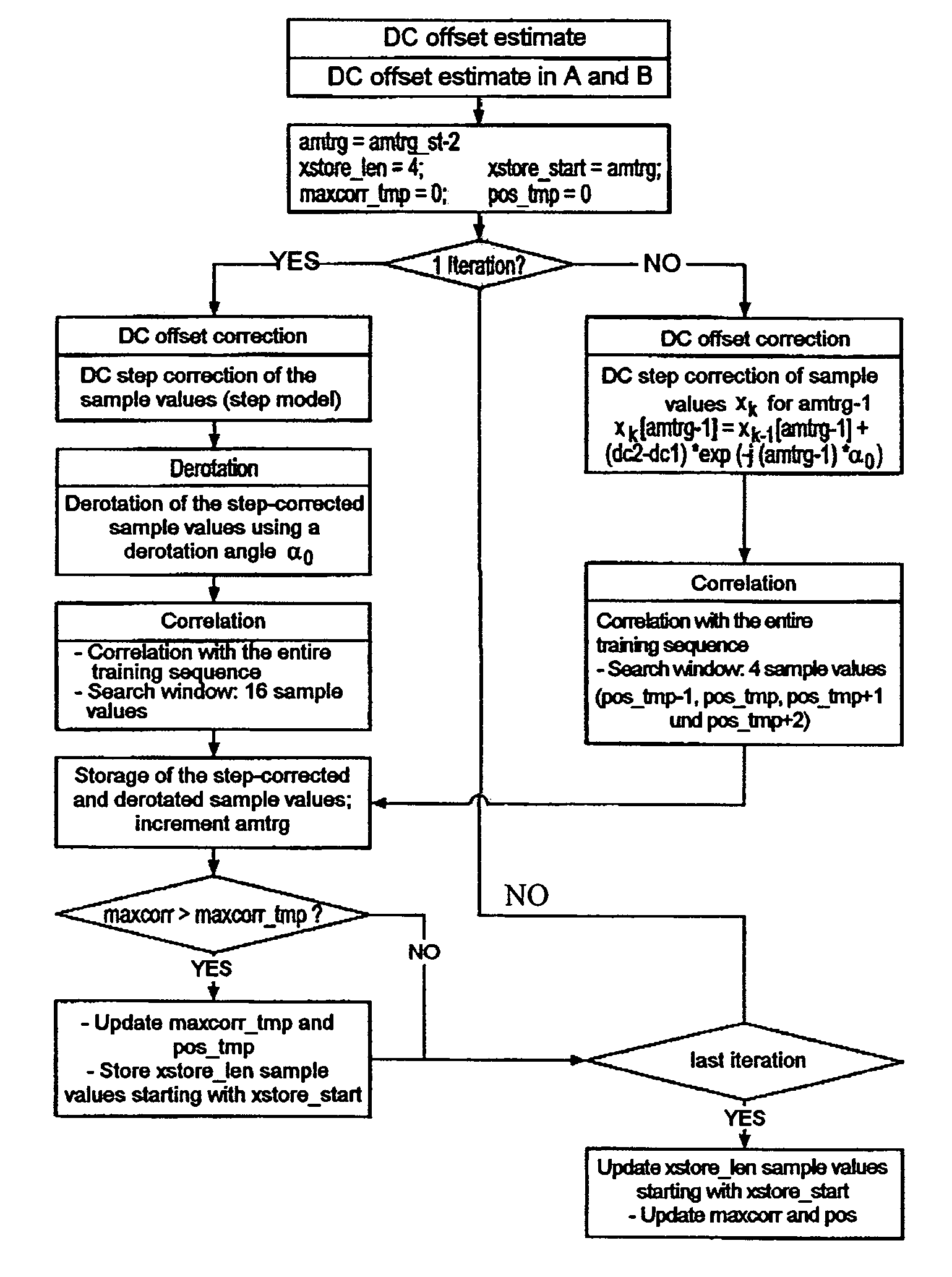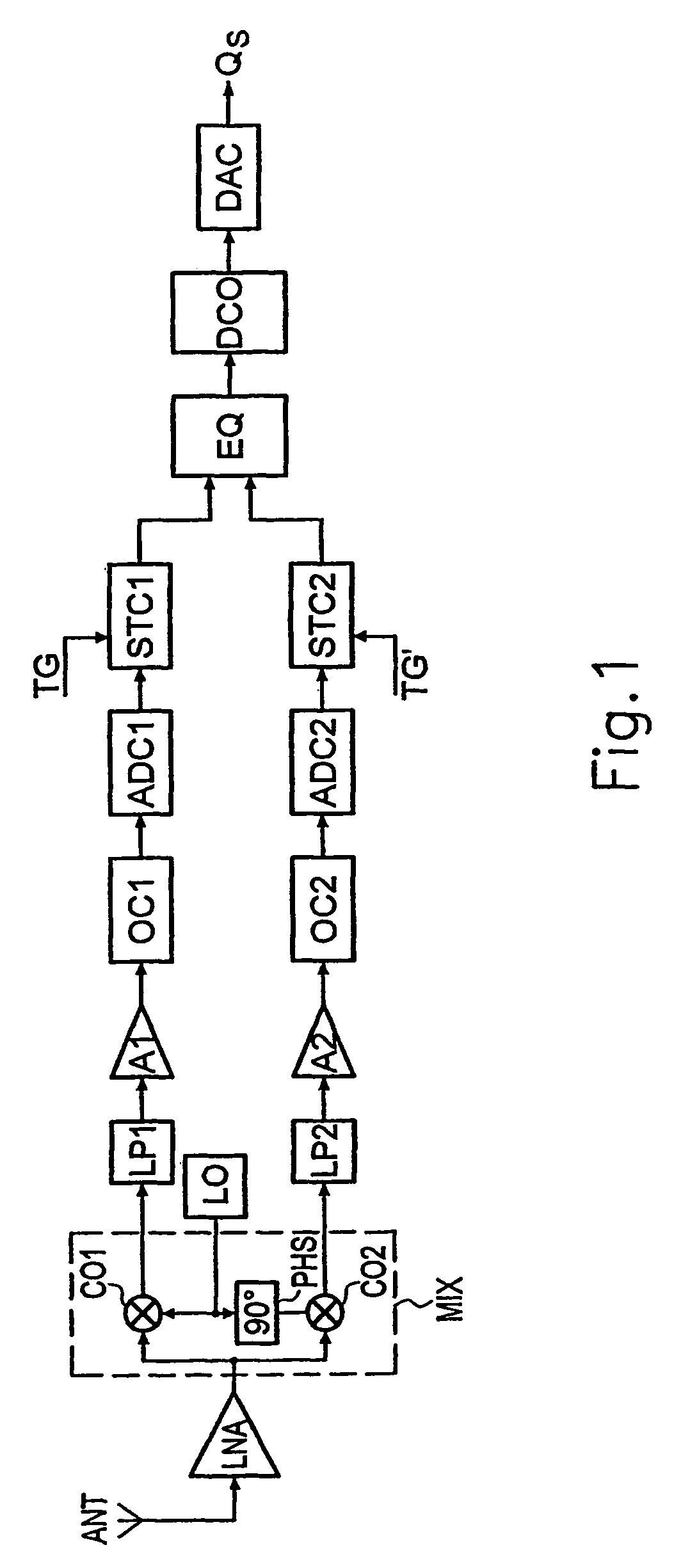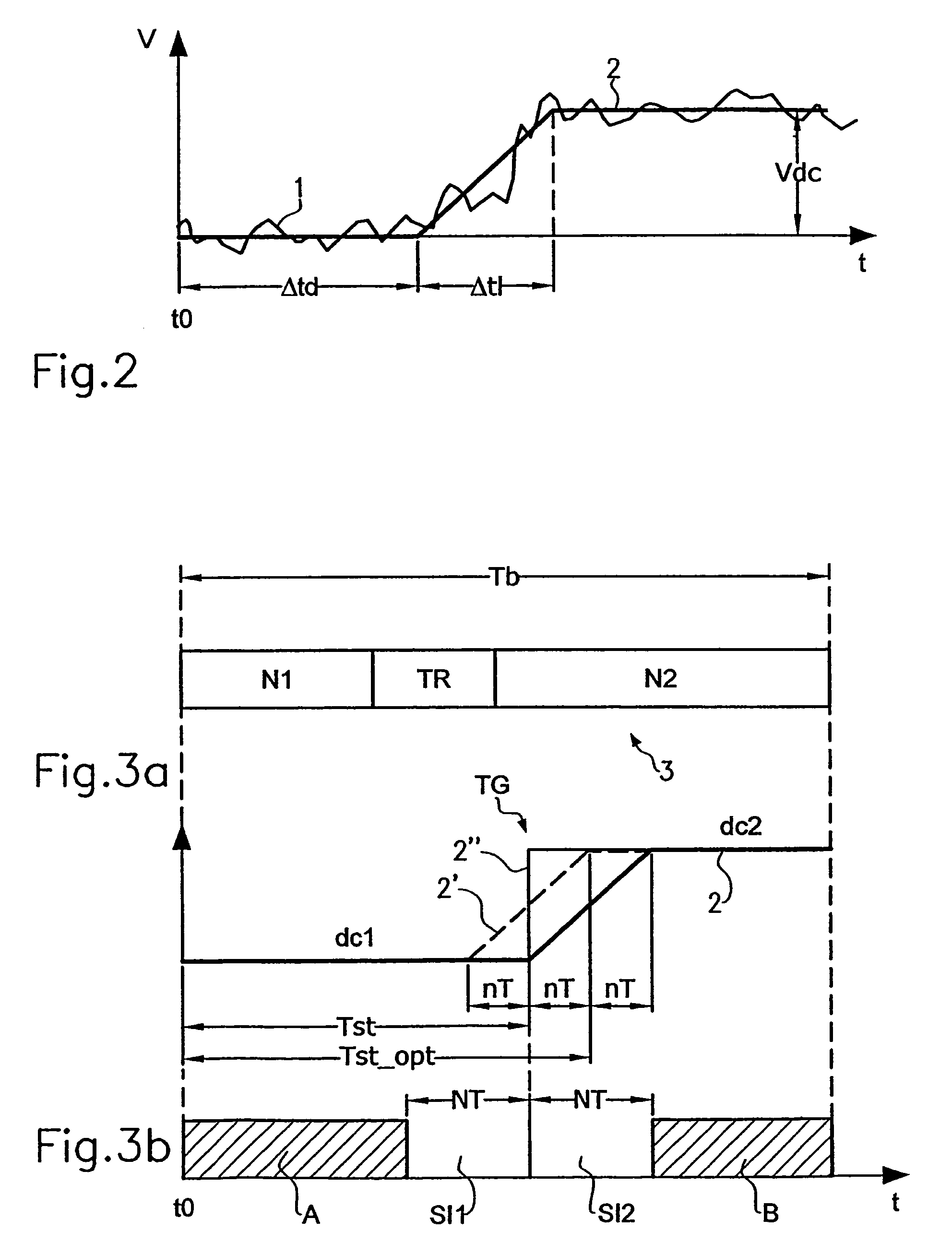Method to compensate for a step DC disturbance in a digital baseband signal in a homodyne radio receiver
a radio receiver and digital baseband technology, applied in the field of method to compensate for step dc disturbance in the digital baseband signal in the homodyne radio receiver, can solve the problems of increasing the bit error rate in the receiver, affecting the reception quality of the mobile radio receiver, and achieving the disadvantageous effect of signal quality
- Summary
- Abstract
- Description
- Claims
- Application Information
AI Technical Summary
Benefits of technology
Problems solved by technology
Method used
Image
Examples
Embodiment Construction
[0050]FIG. 1 will be used to explain the principle of a heterodyne receiver, and shows the signal path in this receiver, in the form of a block diagram.
[0051]The receiver has an antenna ANT via which a radio signal is received and is passed to a low-noise amplifier LNA. The output of the amplifier LNA is passed to a mixer MIX, which directly down-mixes the received signal to a baseband, and splits the received signal into I and Q branches. For this purpose, the mixer MIX has two mixing stages CO1 and CO2, which are driven by the carrier frequency of the received signal, phase-shifted through 90° with respect to one another. The carrier frequency is produced in the oscillator LO, and is phase-shifted at the phase shifter PHS.
[0052]The two analog baseband outputs of the mixer MIX are spectrally formed in low-pass filters LP1 and LP2, respectively, and are amplified by means of respective amplifiers A1 and A2.
[0053]Optional analog DC offset connection stages OC1 and OC2 are illustrated...
PUM
 Login to View More
Login to View More Abstract
Description
Claims
Application Information
 Login to View More
Login to View More - R&D
- Intellectual Property
- Life Sciences
- Materials
- Tech Scout
- Unparalleled Data Quality
- Higher Quality Content
- 60% Fewer Hallucinations
Browse by: Latest US Patents, China's latest patents, Technical Efficacy Thesaurus, Application Domain, Technology Topic, Popular Technical Reports.
© 2025 PatSnap. All rights reserved.Legal|Privacy policy|Modern Slavery Act Transparency Statement|Sitemap|About US| Contact US: help@patsnap.com



